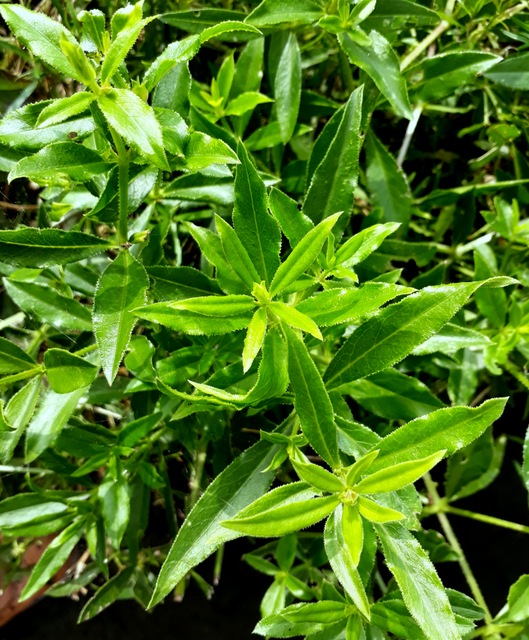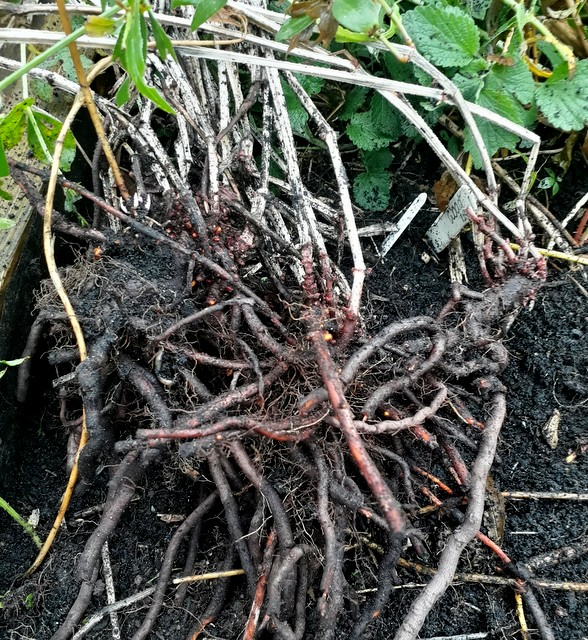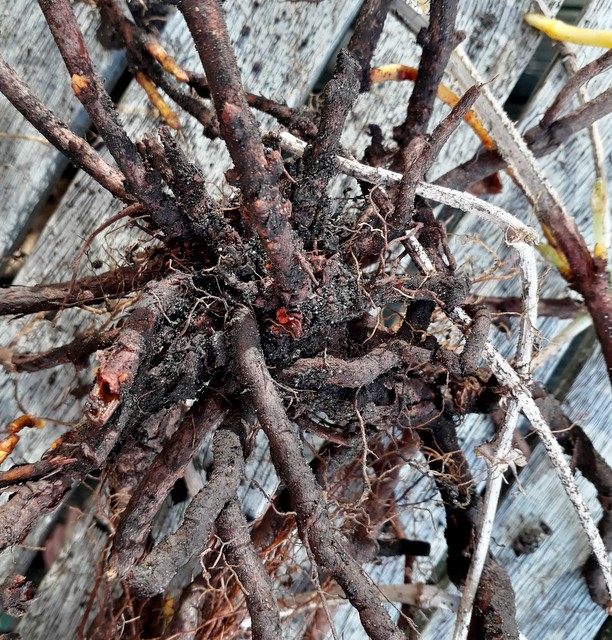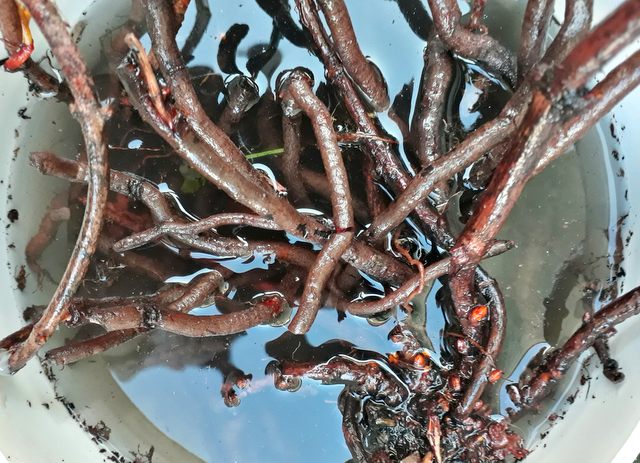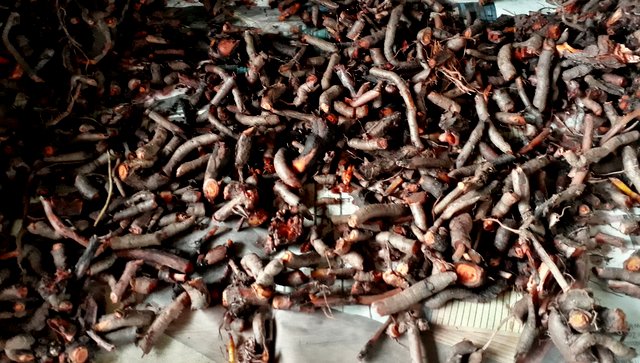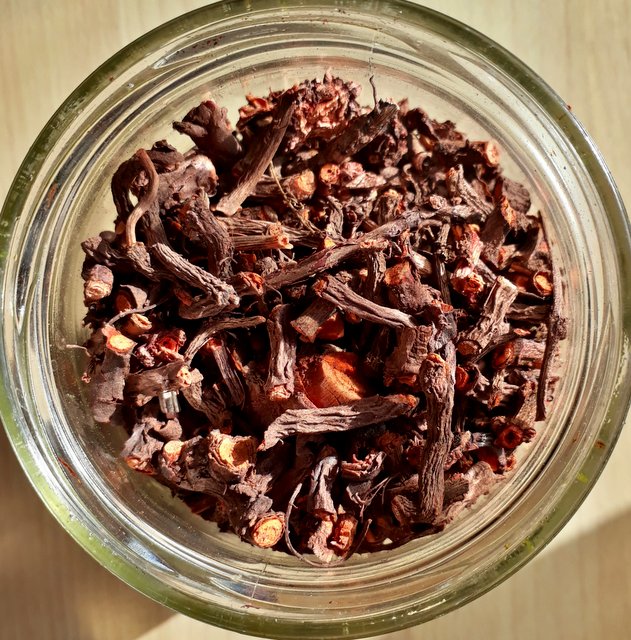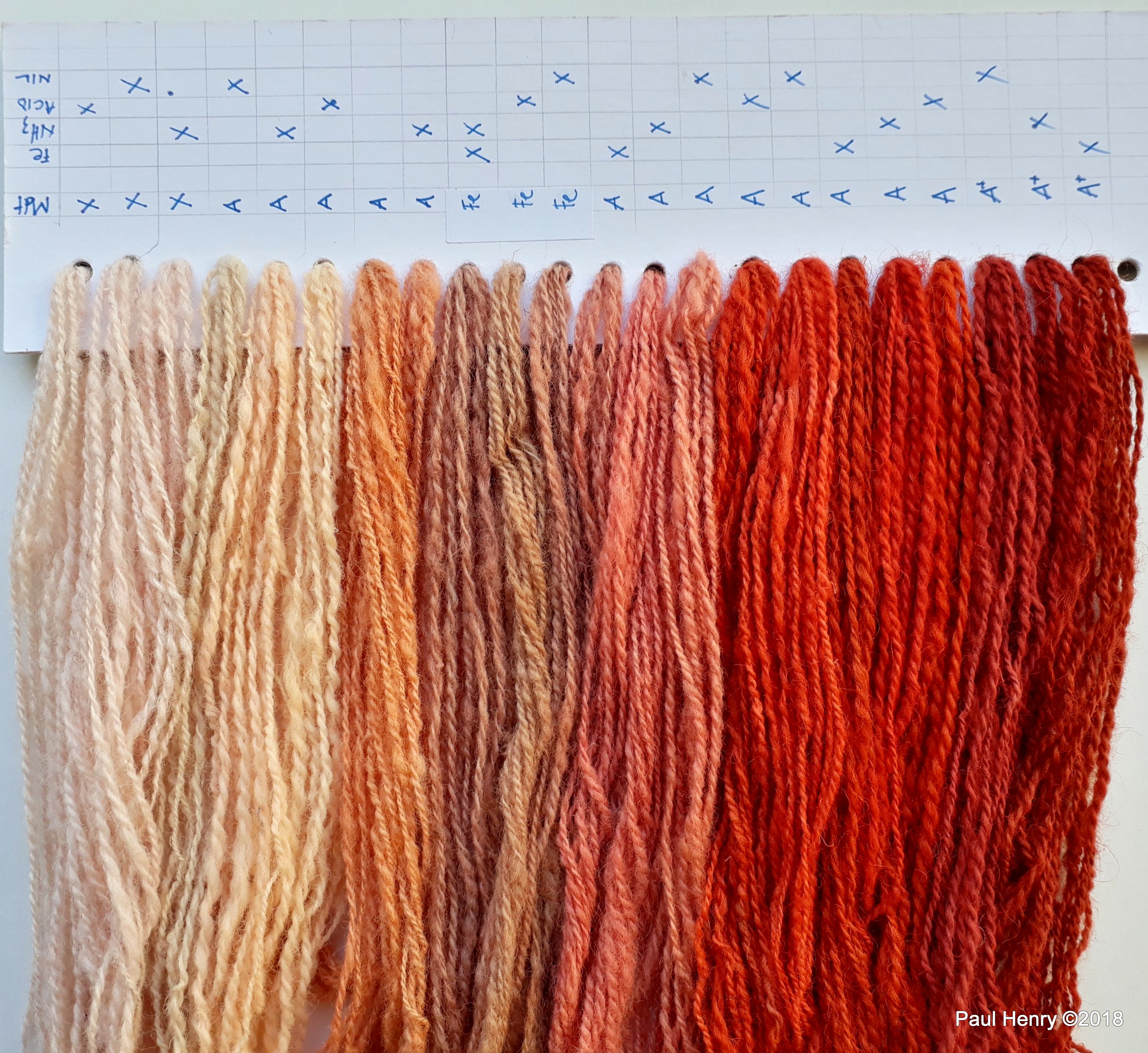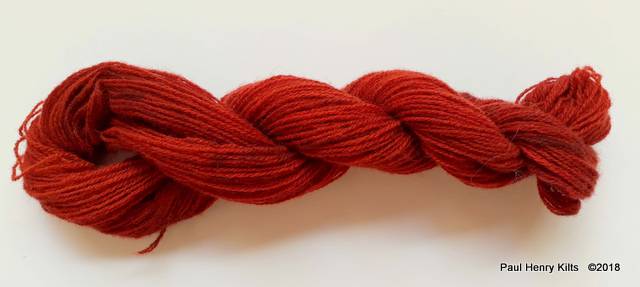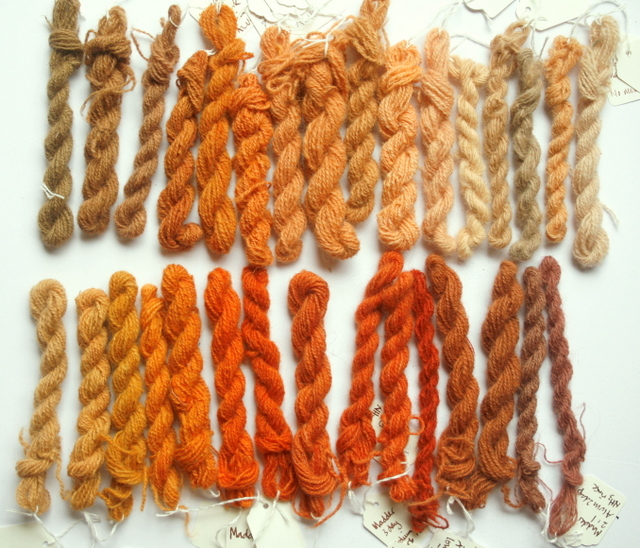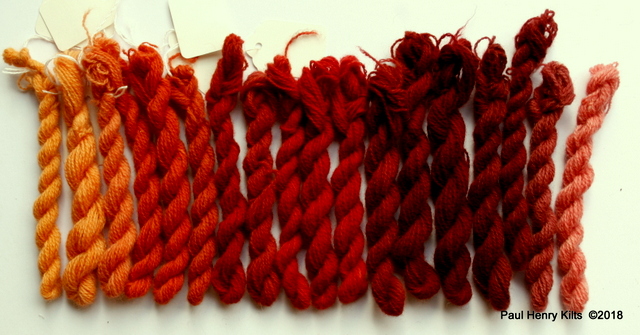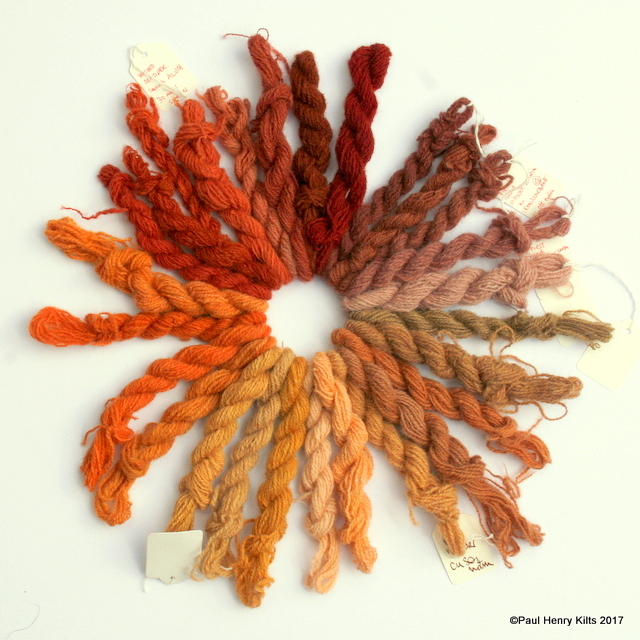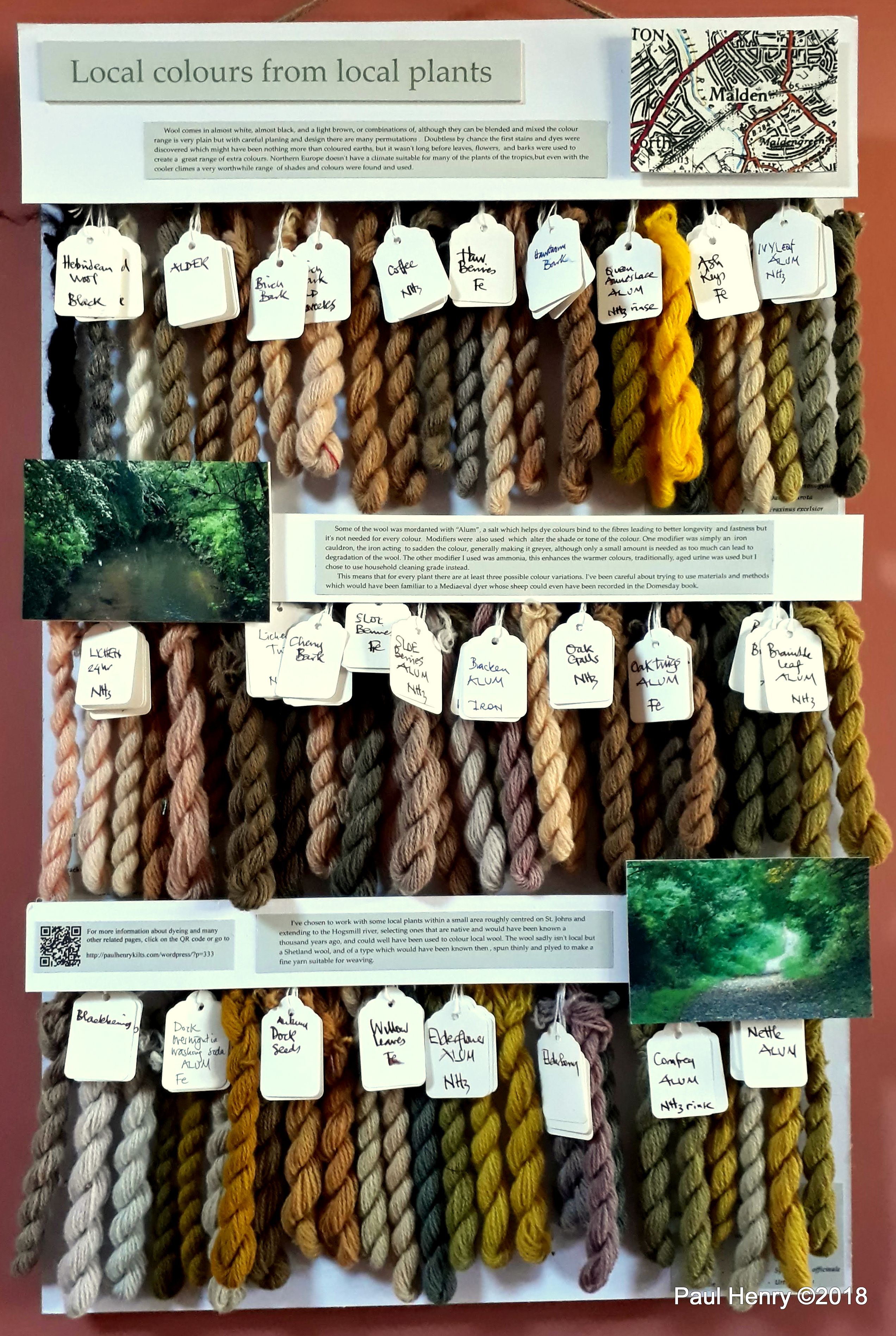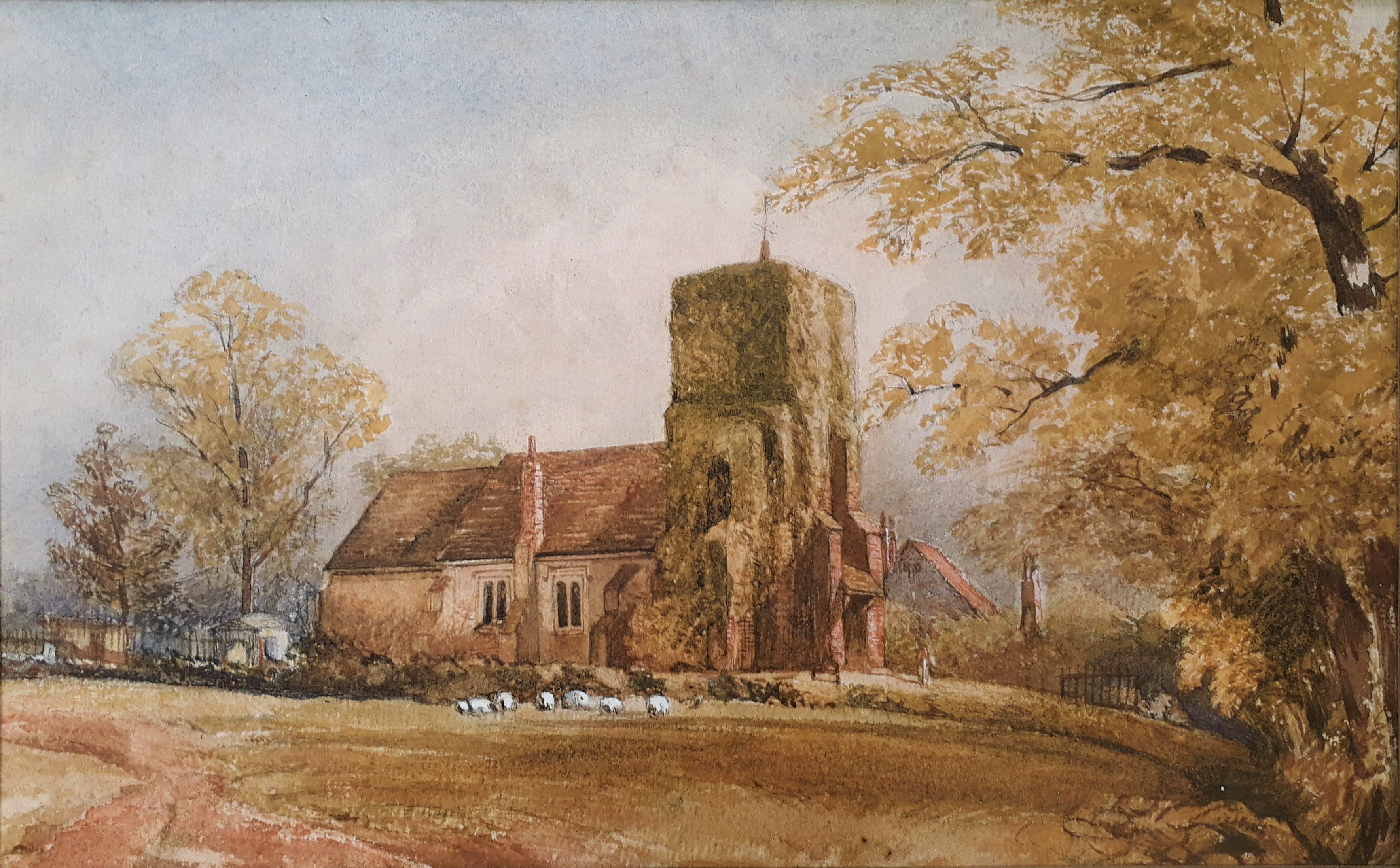Recently there was the unveiling of a rather special piece of tartan, dating between 1500 and 1600, it’s a twill weave with a complicated 4 colour sett, and is the earliest piece of true tartan found in Scotland, it’s all been rather exciting and I look forward to seeing it later in the year.
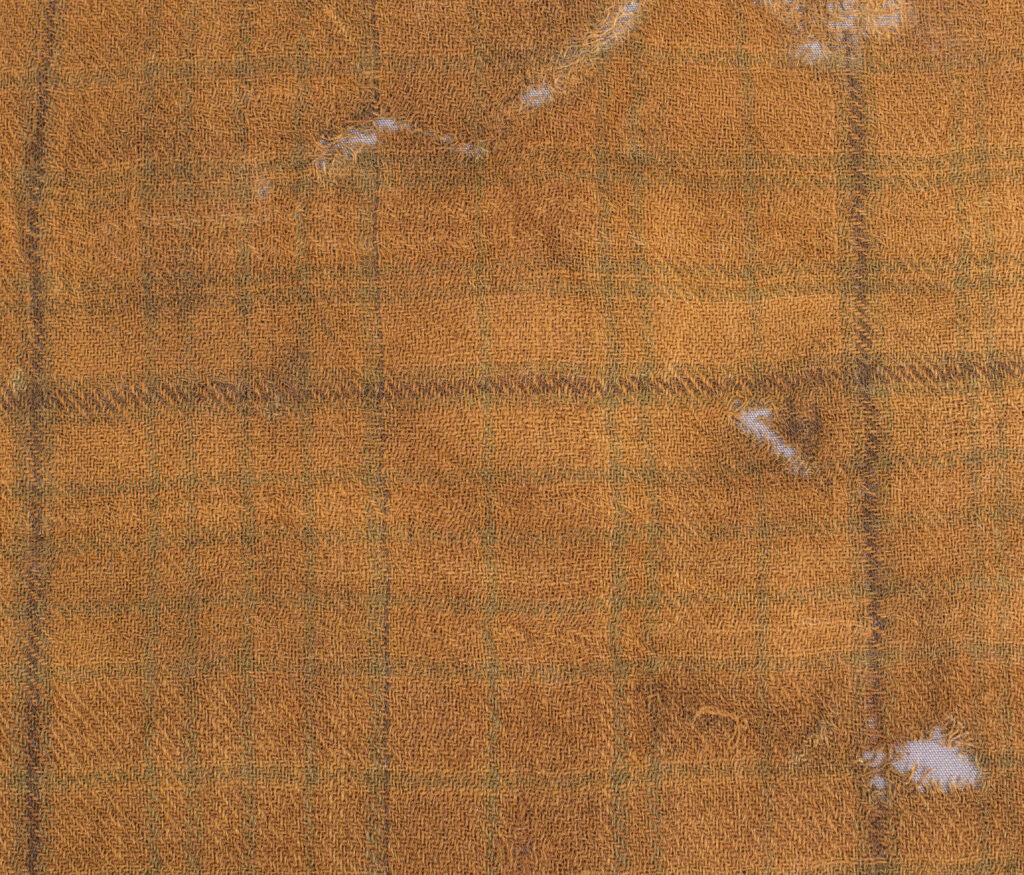
For some time I’ve been thinking of spinning and weaving a little sample of an early tartan and this discovery has spurred me on, whether I do a copy of “it” or something along the lines I haven’t yet decided, but it is the current source of inspiration. Obviously hand spun using drop spindles – the wheel hadn’t made it to Scotland at that time, and as drop spinning is a particular favourite of mine I’m more than happy to start making metres of yarn. The type of sheep used is important, the likely original one was most likely the Scottish Dunface, it no longer exists, but the North Ronaldsay is similar, it’s still available although classed as a rare breed. They are unusual as they live on the beach, surviving on seaweed as opposed to grass, so rather special. They aren’t a large sheep, and are often tan or cream, with darker areas, but can give a reasonably white yarn once finished. I’ve always been keen on processing my own wool, and that means starting with a fleece, I haven’t (yet) sheared any, but it might still happen.
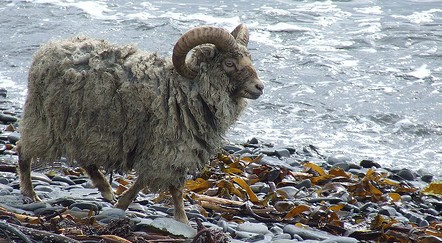
I’m going through the entire process from fleece to yarn, it’s much the same for any fleece really, it’s my usual way of cleaning and preparing almost any yarn from a single fleece – for multiple fleeces I often choose a slower but much more eco way, but more of that for another time.
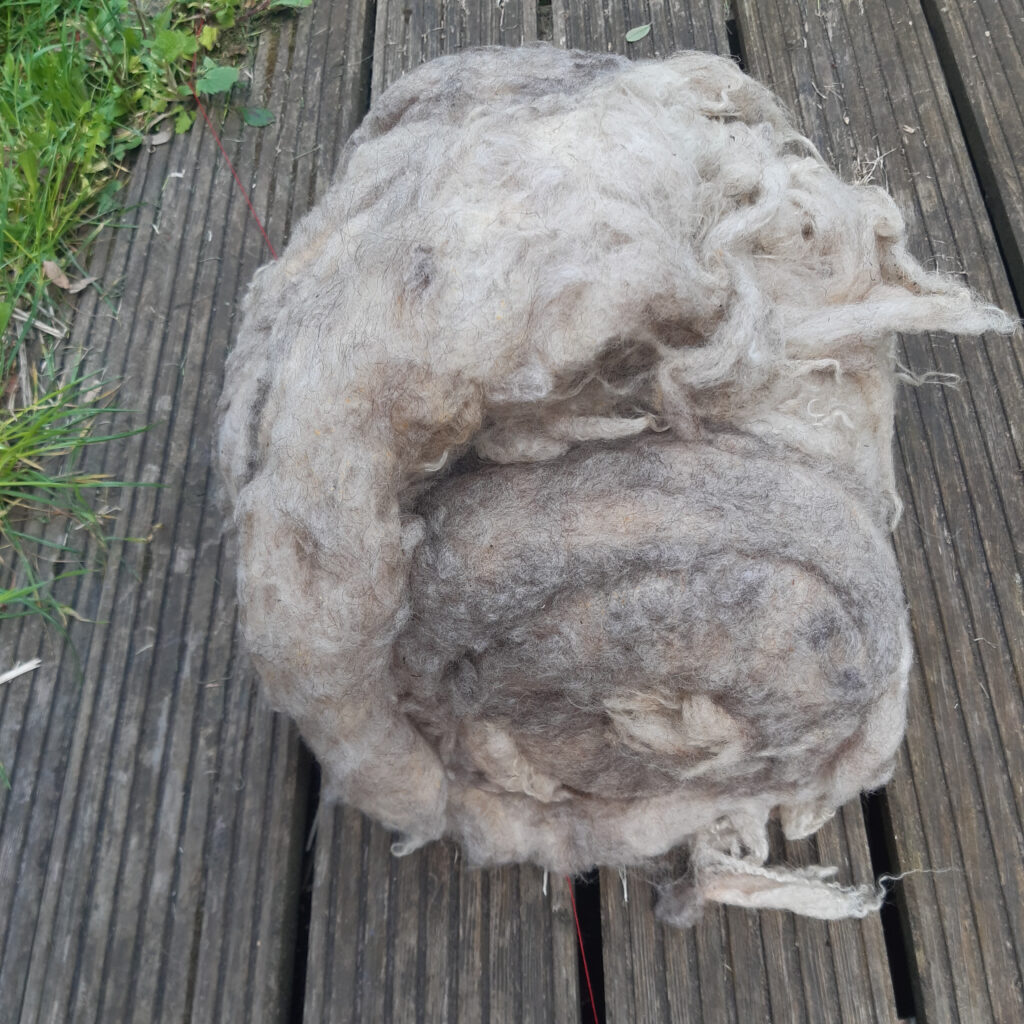
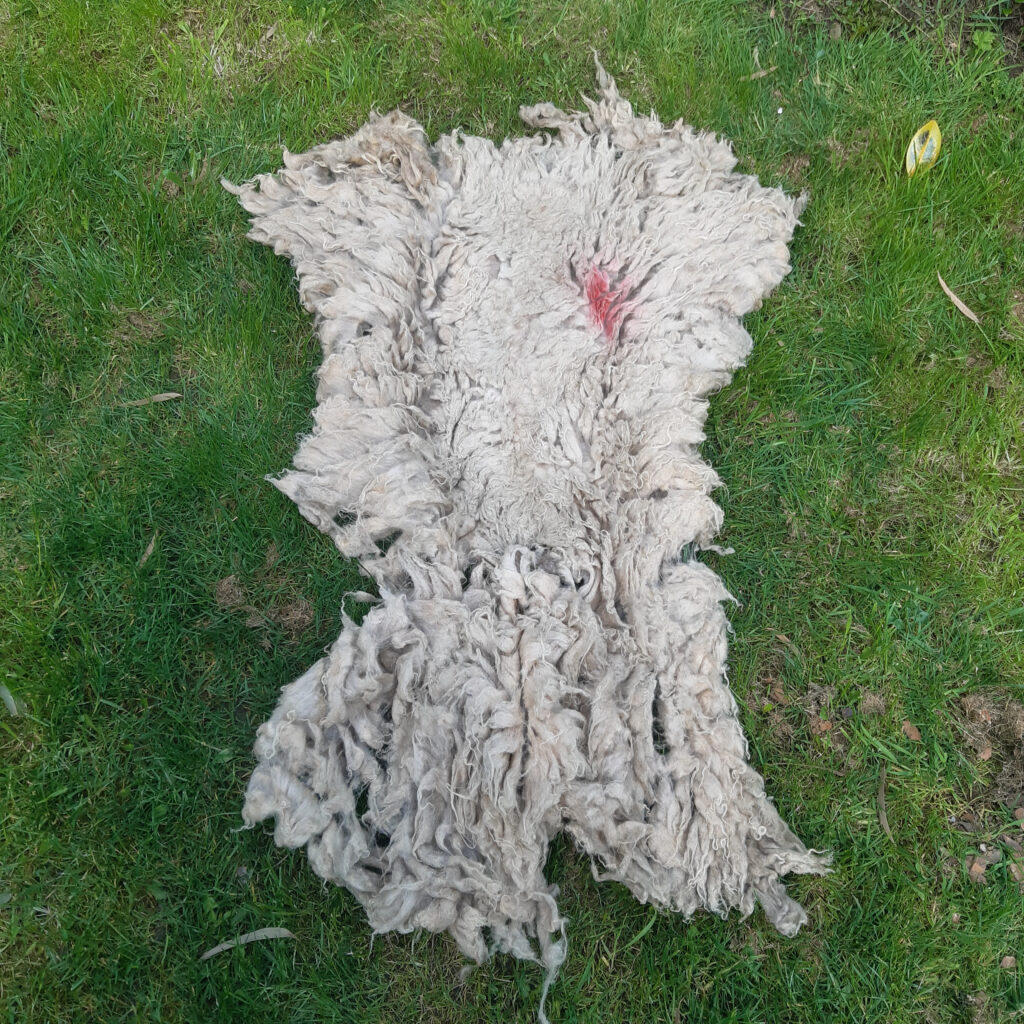
The fleece is generally rolled into a nice tight bundle, it has already been skirted to remove the worst of the daggy bits and rough or torn edges, so after checking it over, it’s time for a soak. This fleece was just under a kilogramme so not difficult to manage. I’ve learnt over the years that an overnight soak in a large bucket of cold water does such a lot of good, it softens any mud or debris, and helps to loosen up the fibres.
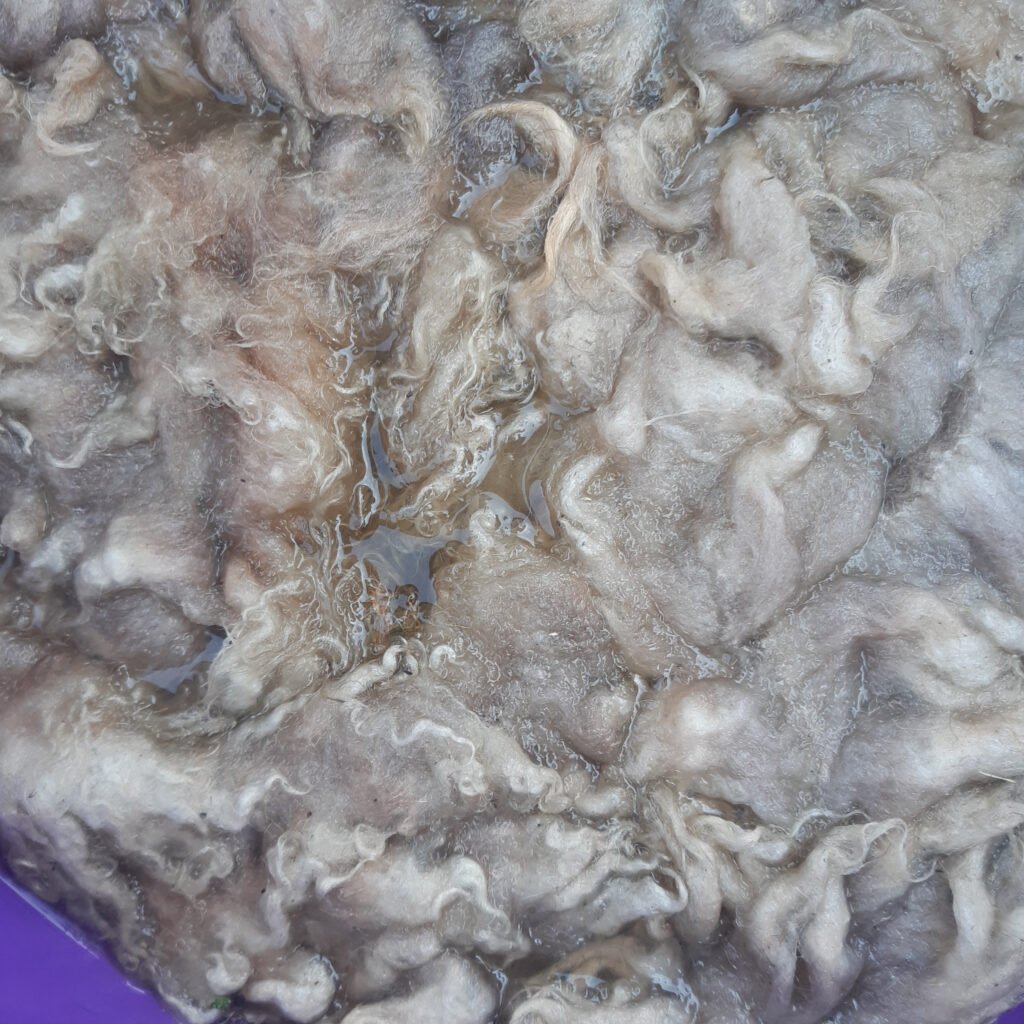
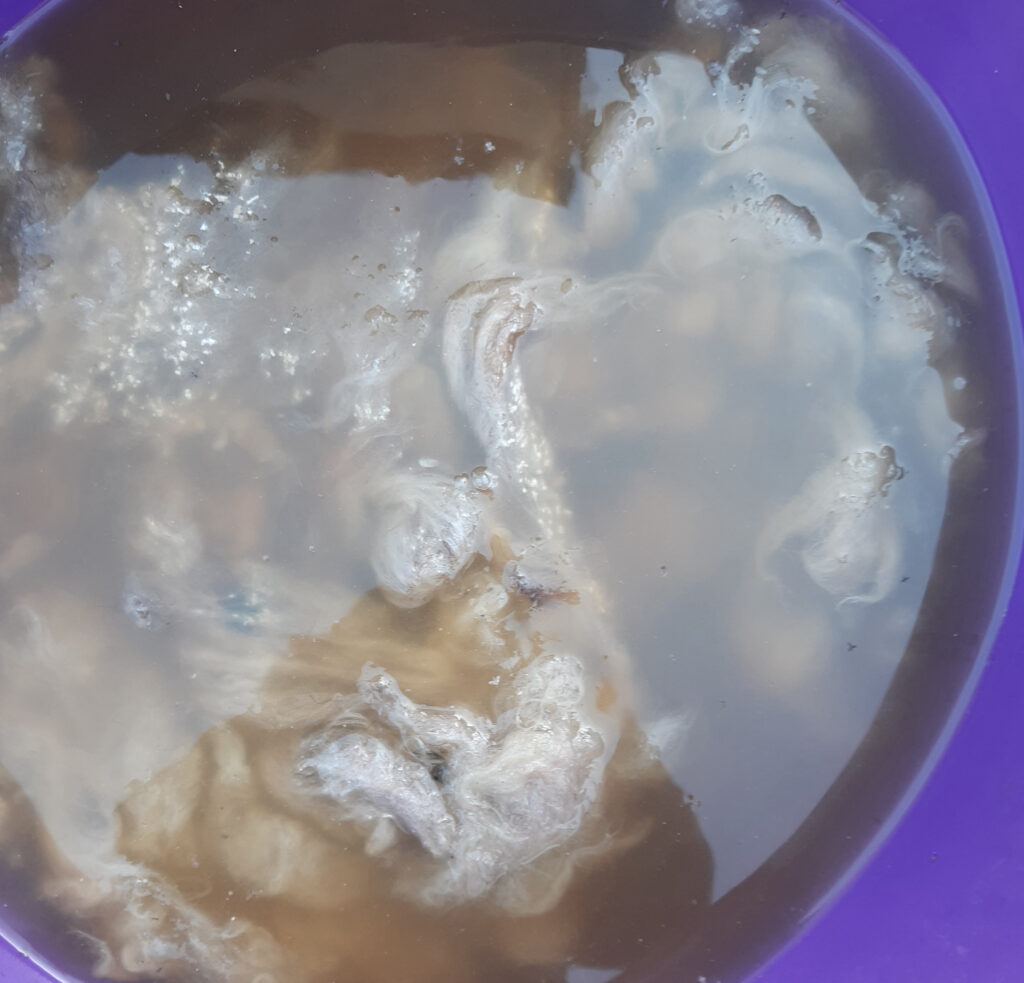
It doesn’t get agitated too much , just to make sure it is all under the surface, sometime I confess that it takes a few days to work on all of any fleece, but there isn’t any harm in letting it sit a bit longer. The next day I take a large handful, drain or squeeze it to remove as much dirty water as I can, then using a smaller bucket with a little cheap detergent dissolved in some just warm water, I put the fleece in and very gently move it around, I’m feeling for any bits of vegetable matter – or similar and remove them and also any hardened clumps of wool or obvious short cuts. Often I will then do a fairly hot wash with a little more soap, a little hotter than hand heat to remove some of the lanolin, each fleece is different and each spinner prefers a different level of the grease. The North Ronaldsay has a reasonable level of lanolin already so I want to leave just enough in to make the spinning pleasant. Several rinses later and all at similar temperatures as you don’t want the lanolin to redeposit, it is taken out, drained and left to dry which can sometimes take a few days depending on the weather. A lot of this processing is best done outside, it’s a fairly wet and messy job but the garden does appreciate the enriched soaking water.
Once dry the fleece may well have clumped together a little, so it needs to be teased or picked apart to make the next process easier, basically just pulled to open up the fleece so it begins to look fluffier.
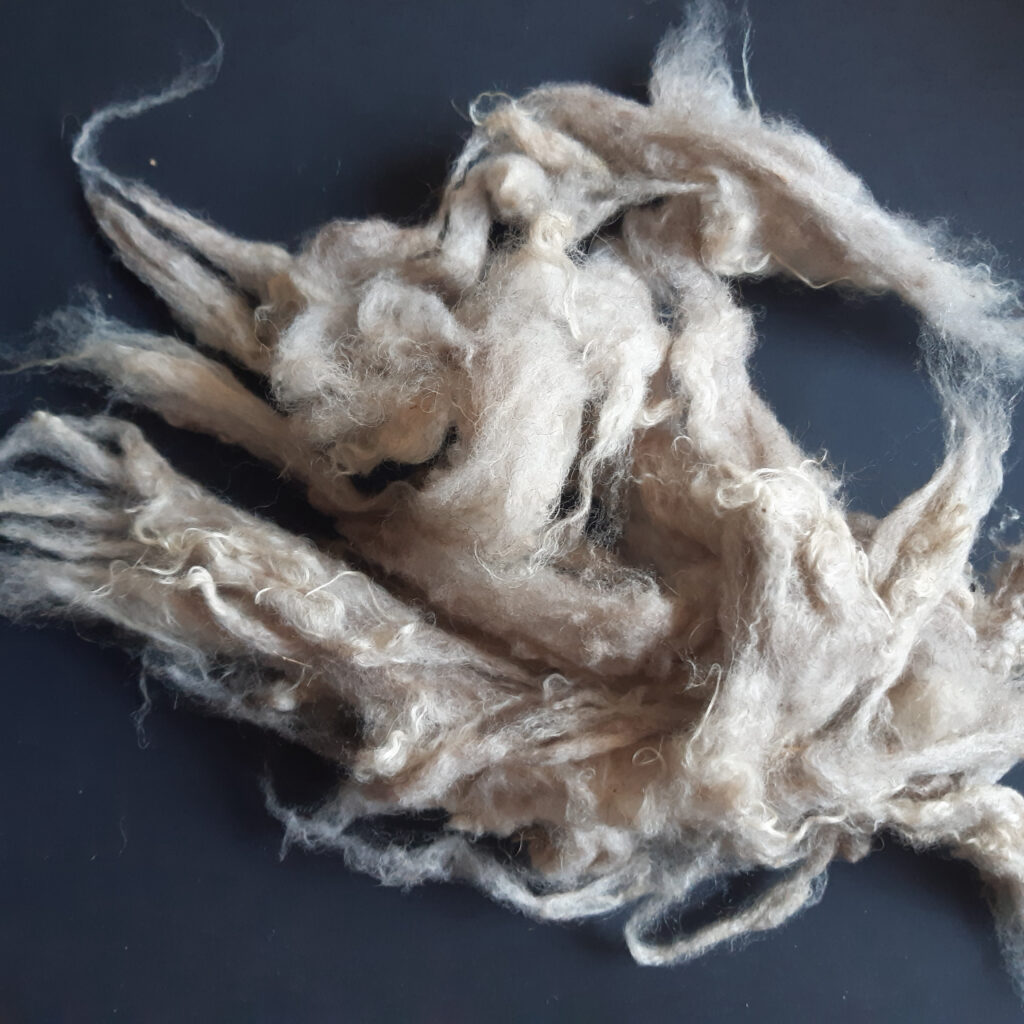
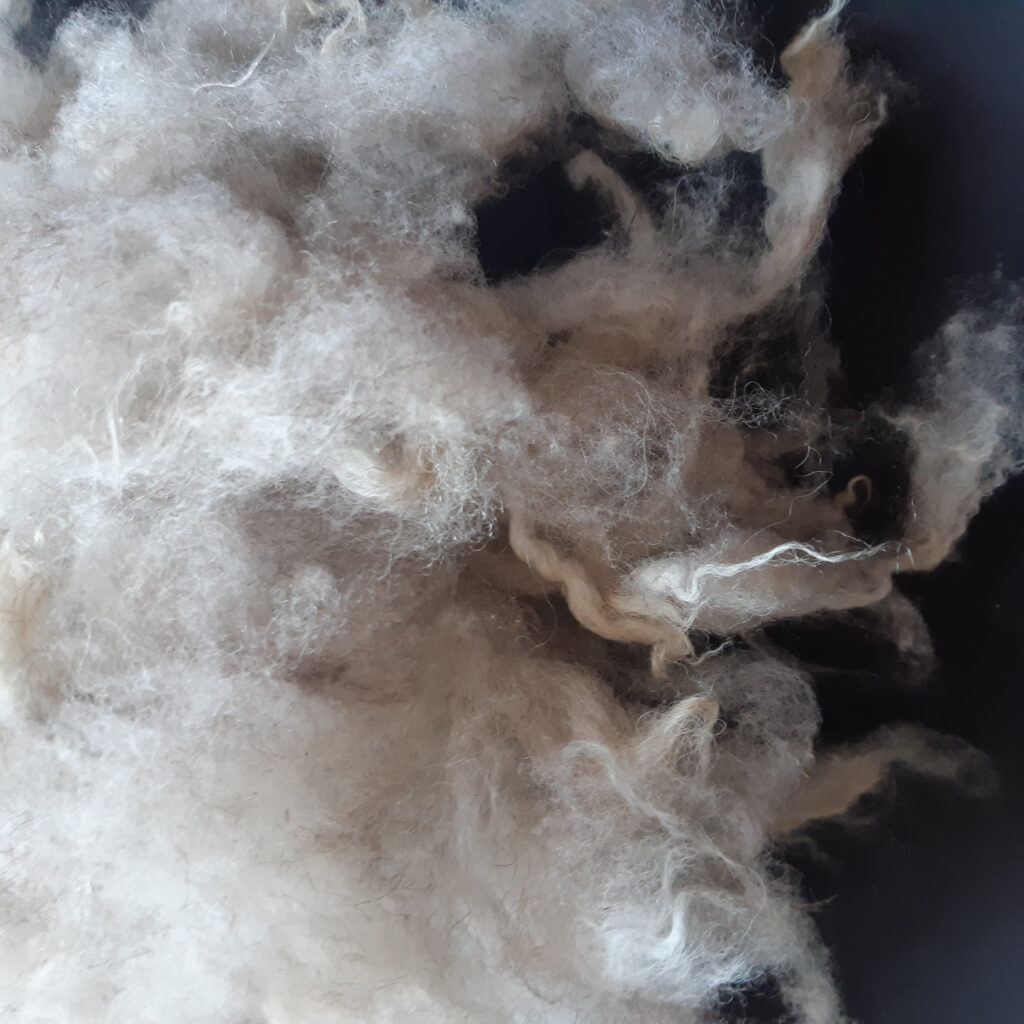
The next decisions are to whether to card or comb it and how to spin it , all the options give a different final result. There are two main ways to prepare wool fibre for spinning, each has advantages and disadvantages, and they go towards different types of finished yarn – carding or combing.
Carding uses a board with fine metal wires and aligns the fibres , it uses all the fibre – shorter and longer ones but is best for fibres no longer than 4″-5″, this mat of fibres is used rolled up across the direction of the alignment, so that all the direction is cylindrical and generally fairly loosely wrappt, the resulting sausage of fibre is now called a rolag. This is then spun from the end and is known as a woollen preparation. This uses almost every bit of the fibre with virtually no waste and is ideal for knitting, it makes a softer, fluffier,lighter, and warmer yarn.
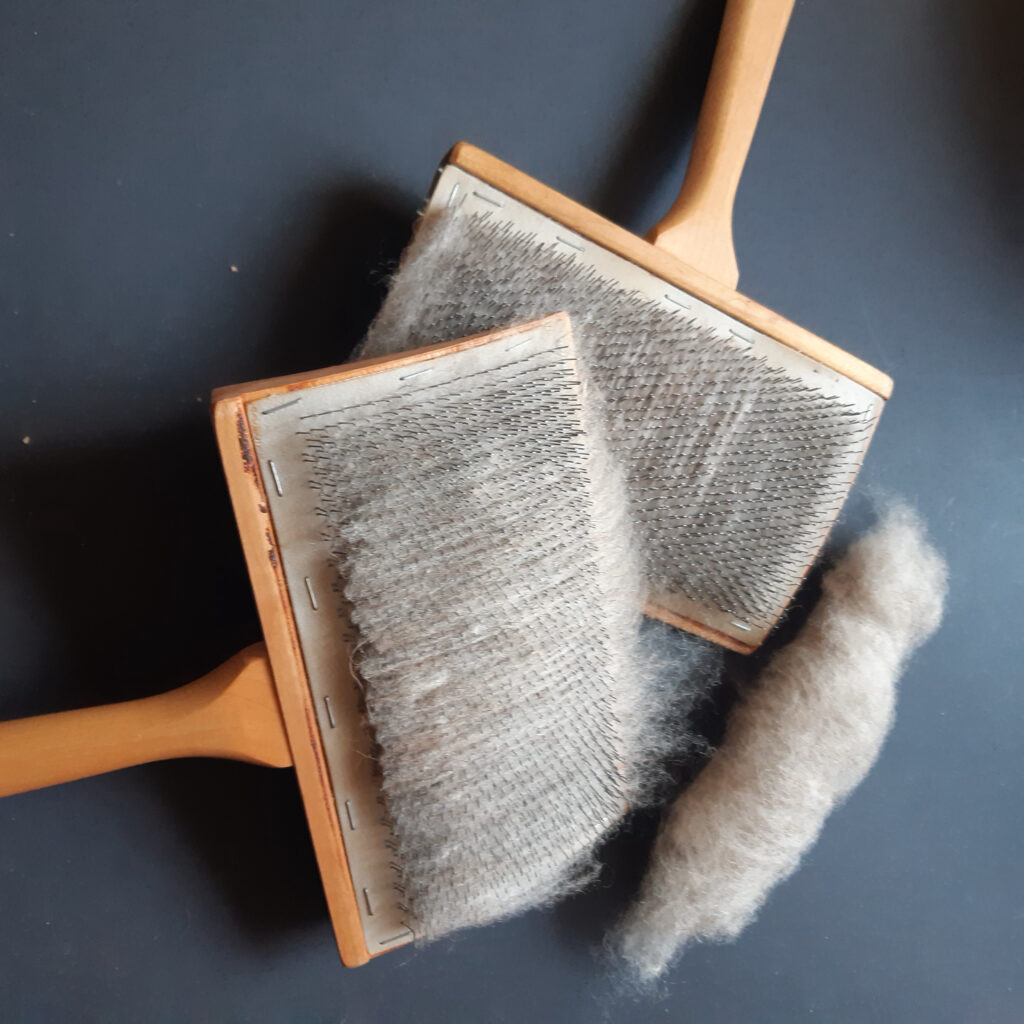
The other preparation is combed, two sets of sharp fine angled nails arranged in pairs, the fibre is laced in one fixed comb and the other comb is swipped against the tines ( but not touching) picking up the longer fibres, this is continued until the first comb no longer gives up any more fibre it is then emptied and then swapped and the process repeated several times, the fully loaded comb is then locked down and the fibre is pulled off in a long strip, now known as top. This has all the best fibres arranged in parallel and the shorter ones have been left behind. Combing is the perfect preparation for weaving finer cloth, it does however leave a lot, perhaps 50% of fibre behind, but that can then be carded for woollen use, but tends to be a little chunkier or fuzzier than the rolags prepared from the original fibre.
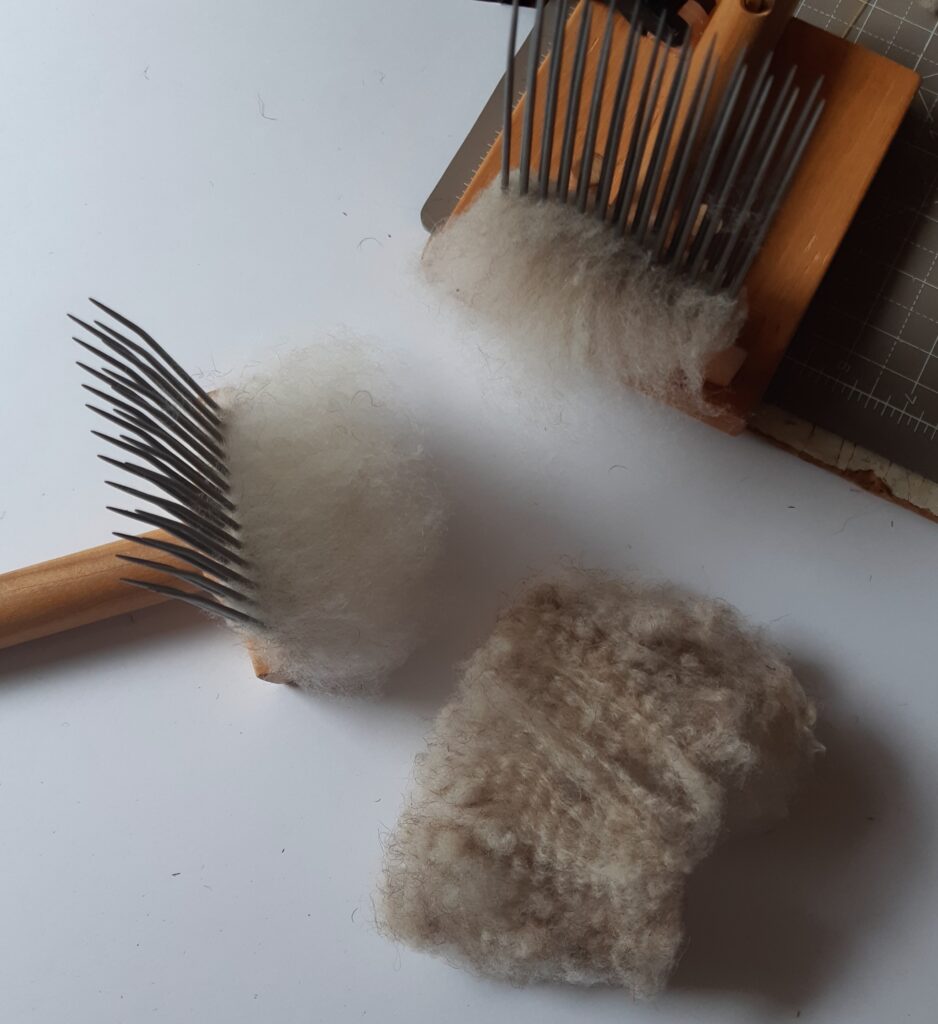
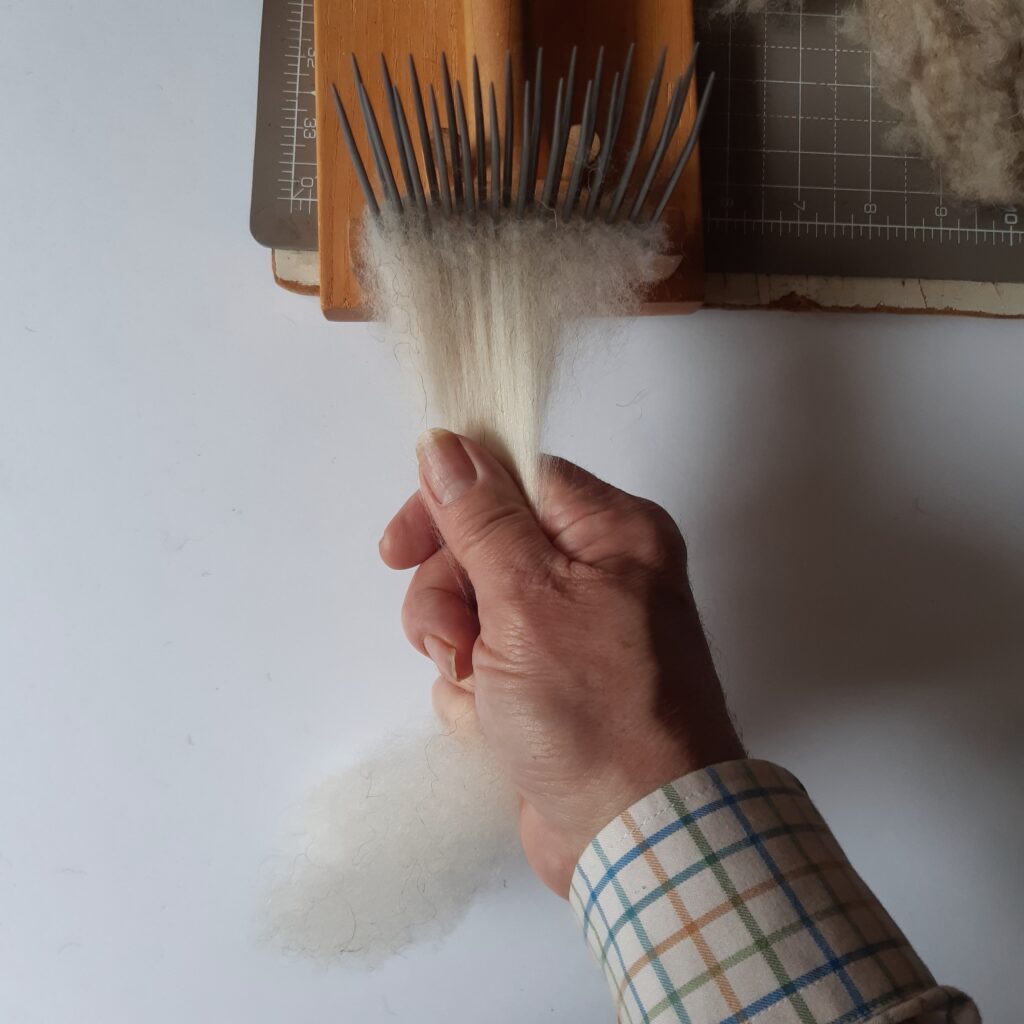
We now have two different preparations of fibre, carded rolags, combed tops, and also the carded waste from the combings. Each of these can be spun either with a drop spindle or a wheel, and can be spun with a tight twist or a looser twist on either, so lots of possibilities for different yarns.
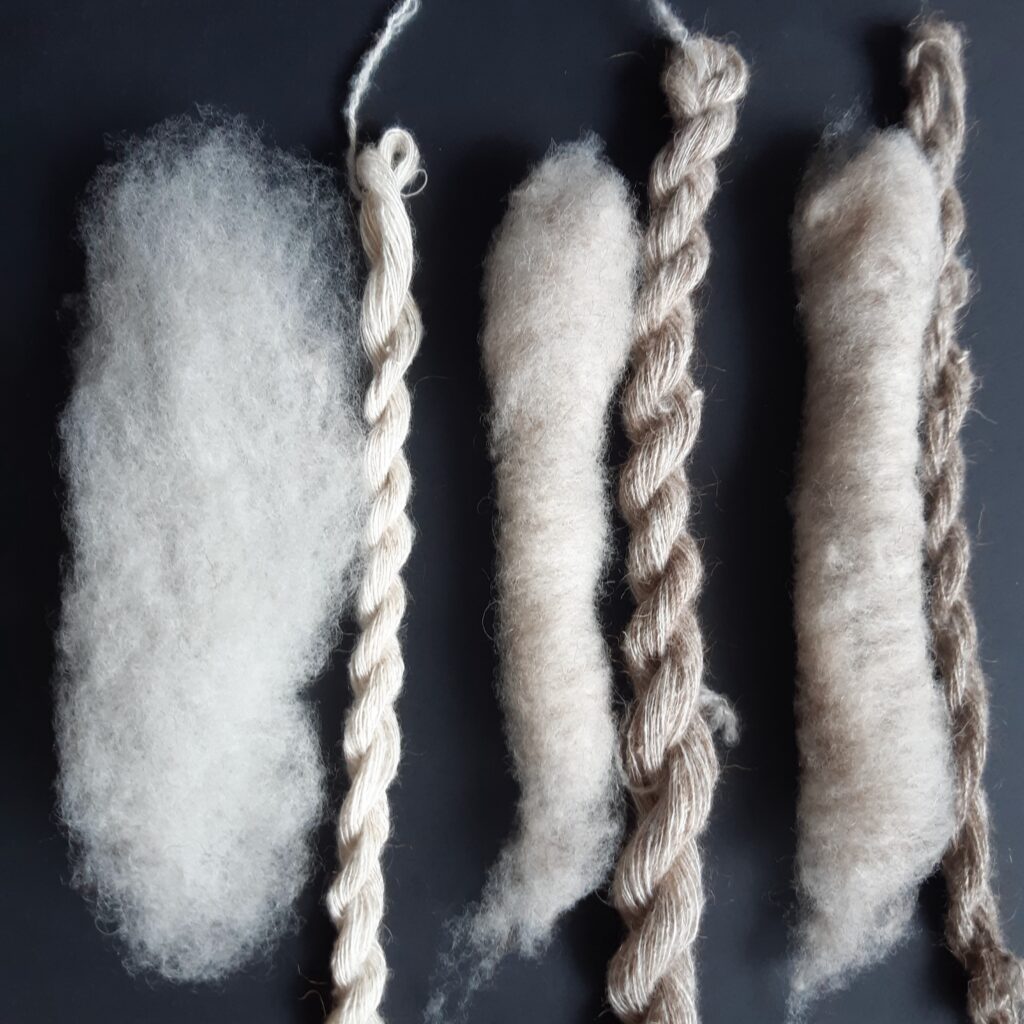
Left – Combed-almost white fine hard yarn
Centre – carded- ecru soft open yarn
Right – Carded from combed waste- dark ecru slightly neppy hairy yarn
So the decision in this case would be the combed prep, it’s almost white, which is important as there will be several colours to be dyed, and it’s smoother for weaving. The carder version with the complete fleece might work but when dyed will take the colour differently, interestingly perhaps but for this project the colours need to be purer. The re-carded version is fluffier and hairier so perhaps more suited to outer wear rather than skin soft, or perhaps even felted and used for rugs or blankets.
For this project I’ll be spinning on a simple drop spindle with a tight twist as it needs to be strong and fine.
The drop spindle would have been used up to the 1500’s, perhaps even later in Scotland. The treadle spinning wheel didn’t appear much before 1200 in the rest of the world, and it was slow to be adopted. Various thoughts that the spinning wheel is faster than the spindle are correct – if the spinner is seated and working, but the spindle is portable, light and easy to carry, and can be used almost anywhere, so over the course of a week there might not be much between the two. In the early years where a “great wheel”, a simple hand turned large wheel, was used it was actually forbidden by law to use that yarn as warp, only as weft where strength wasn’t so important, so drop spinning was very important at that point, of course things changed with the invention of spinning machinery.
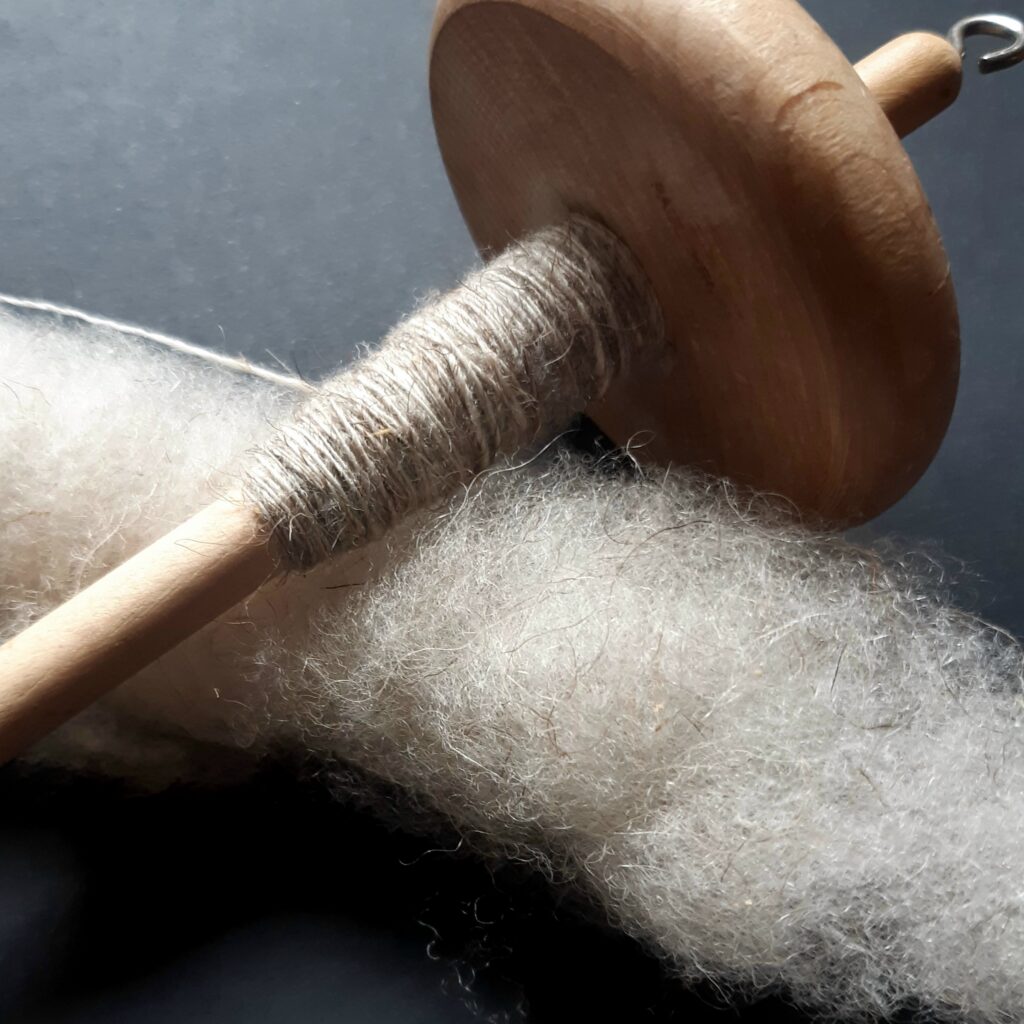

The yarn is being spun as a single as was the original sample tartan, indeed quite often plying wasn’t done, if the single yarn is stong enough then it’s almost a waste to have to spin twice the quantity to ply, albeit you get a more balanced and thicker yarn, but time and effort was very much a consideration. It can take 8 – 10 spinners to keep on weaver busy, so it’s really a valid consideration.
After spinning the spindle is unwound onto a niddy-noddy, tied in 4 or more places and then washed to remove any grease and dirt before dyeing, but also to help to “wet finish” or set the twist.
The niddy-noddy is simply a tool to help organise the yarn by creating a series continuous loops carefully curated into an organised skein but also helps to roughly measure the yardage or meterage, it creates a series of loops carefully curated into an organised skein. Once off the niddy-noddy the yarn curls up because of the spinning twist, but once washed and soaked it relaxes into the well known form of skein or hank.
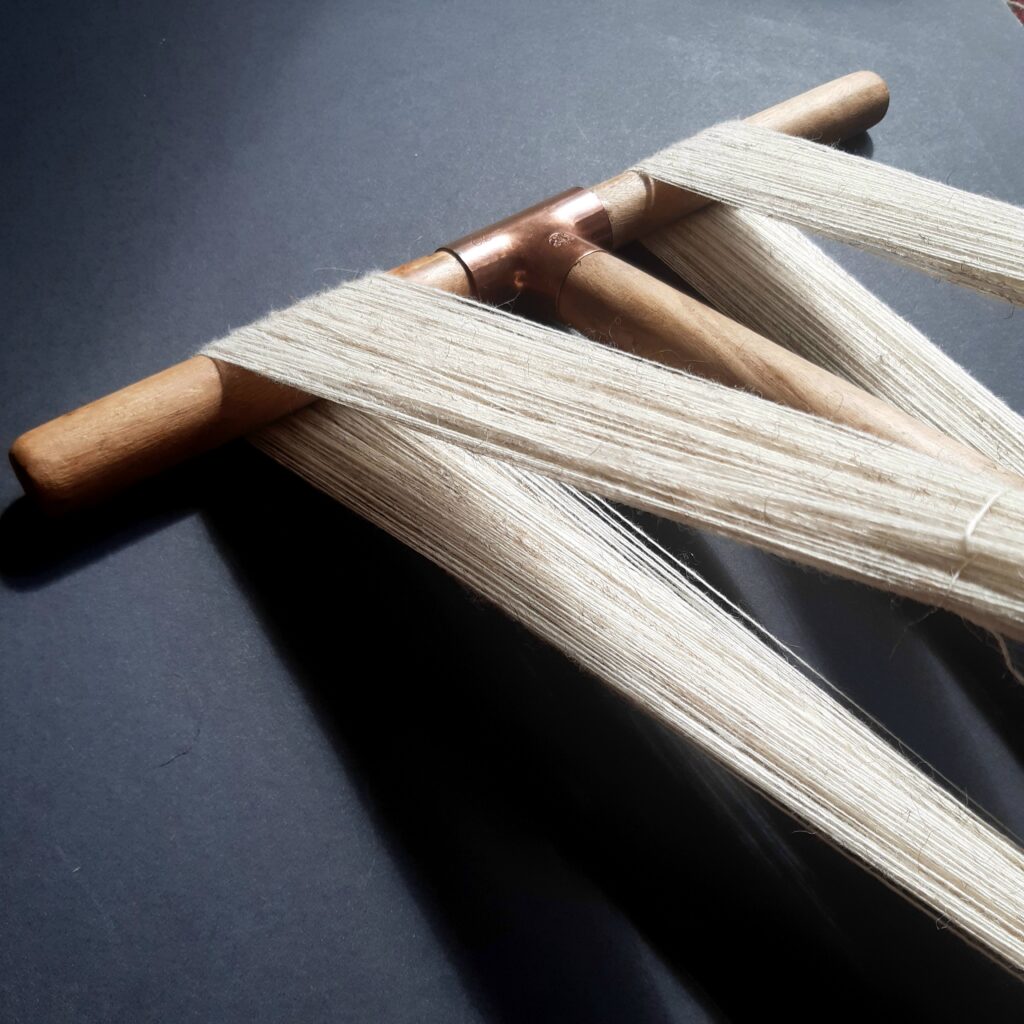
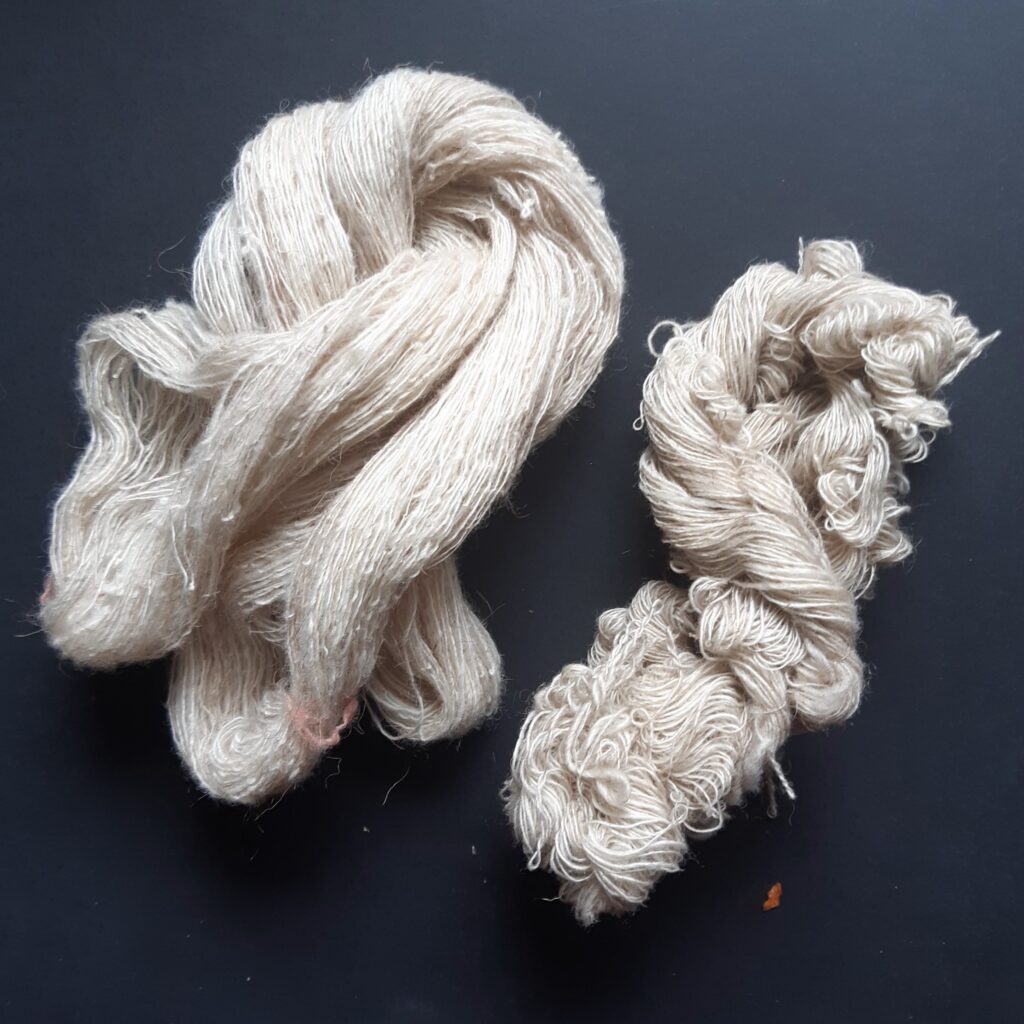
The yarn is now finished, until the next process, either dyeing and weaving, it’s generally better to keep yarn in skeins until it is ready for use, there is less stress on the fibres and easier to see what the yarn feels like and responds to handling.
Processing a raw fleece is a lot of extra work but it is something important for me to feel and touch the fibre, and gives a better understanding of the wool, and every breed is different, and there is a lot of variation even within a single fleece. With careful work it is possible to create a yarn that fits the right criteria for a project. This one I’m only getting about 30% of usable combed fibre yarn for my project, but that doesn’t mean the rest of the wool is wasted, simply it will find a use for another project.
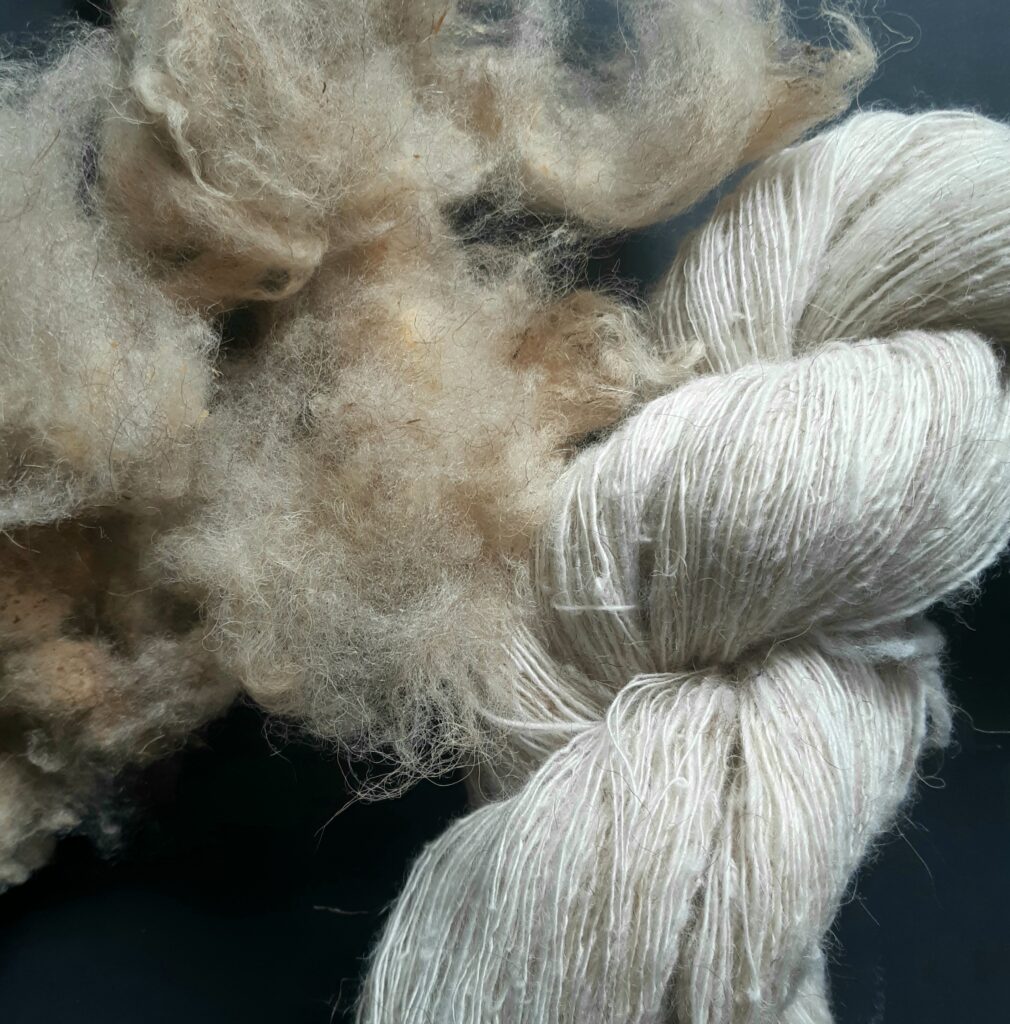
The remaining fibre will be spun up and then used to create 2 ply yarn, both spinning and plying on the same wheel it’s a perfectly good knitting yarn, it will be a chunky lighter weight perfect for hats and scarves, but I don’t yet have a use for it!
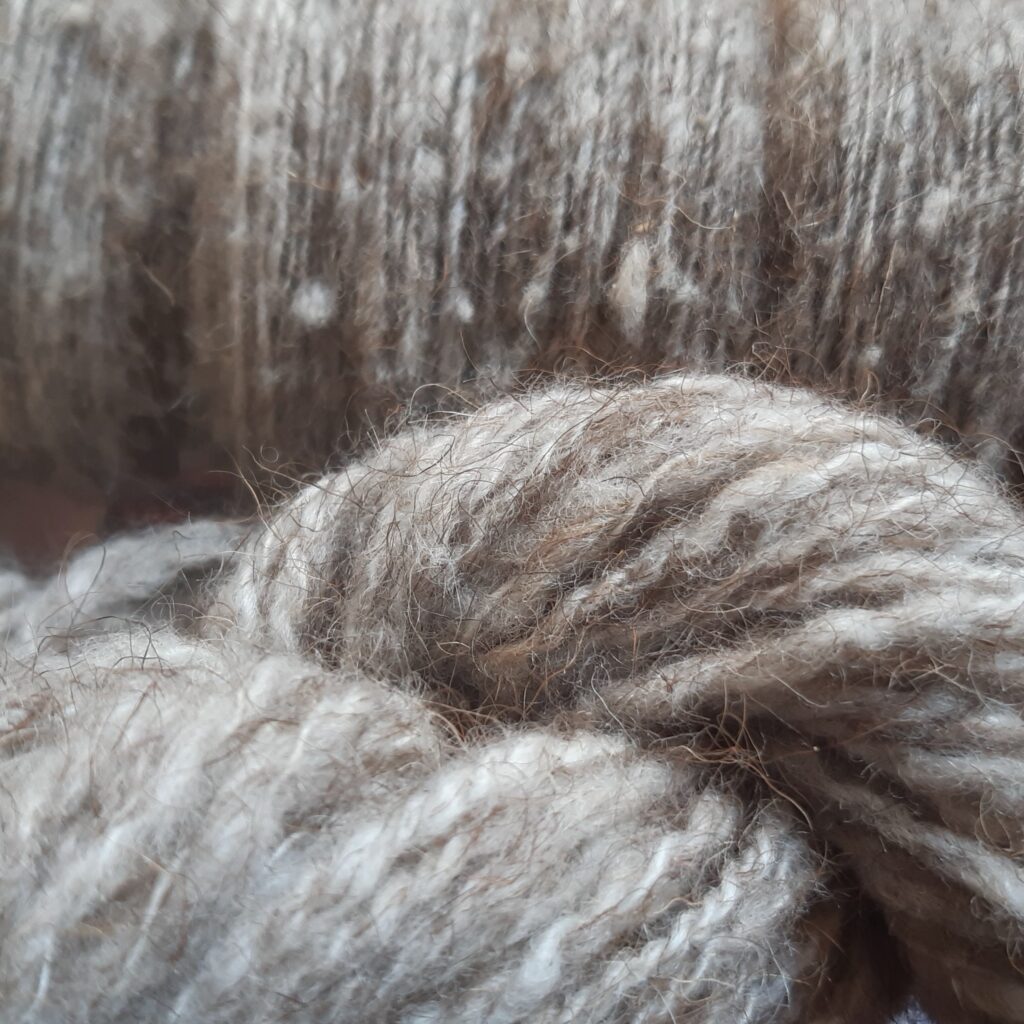
Background are the singles on the bobbin, foreground 2 ply washed and ready to knit, the colour is much closer to the original fleece, a nice light grey brown marl. I will be creating quite a quantity of this one, but every spinner has a healthy stash of finished yarns – just in case the right project comes along, but there is a lot of work to complete on the proper spinning first.

